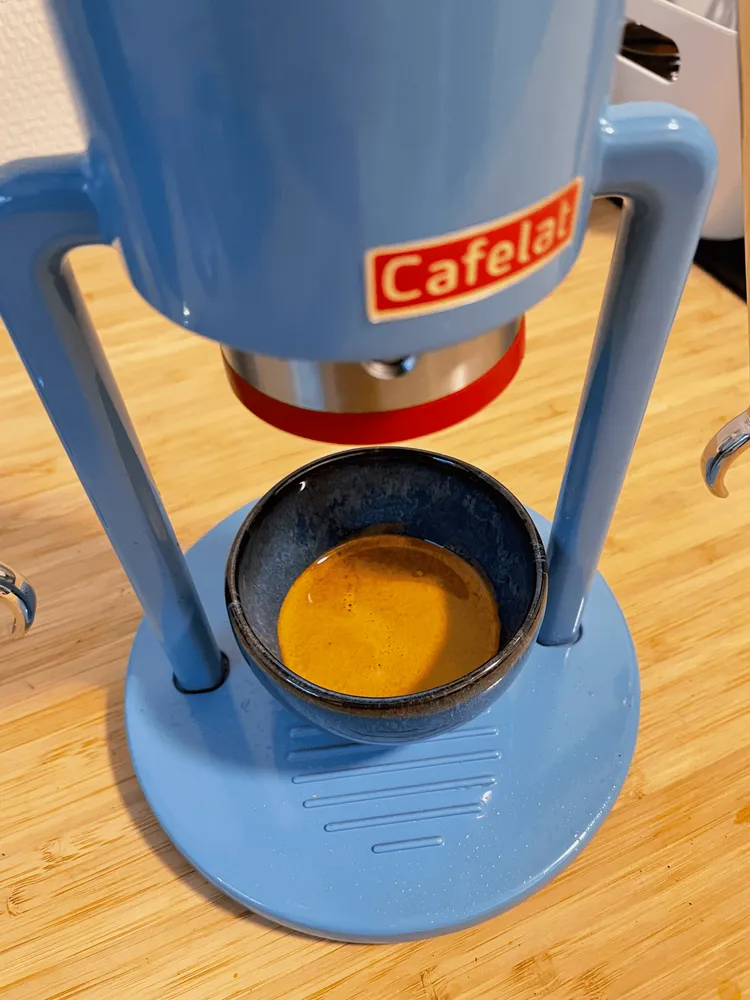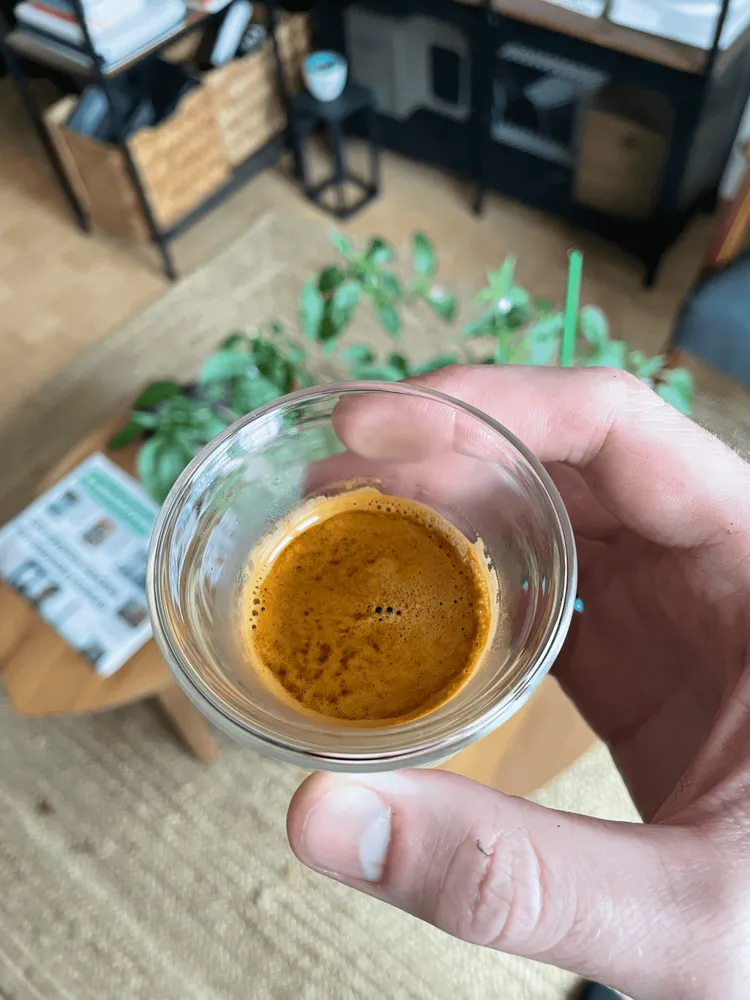Going Manual With My Espressos - The Best Decision I Made
8 min readLast year, I moved out of my roommate’s place and had my first flat. I had to buy a lot of furniture, which delayed acquiring a coffee machine.
I wanted a coffee machine for quite some time, but I decided to go for teas since I wasn’t sure what to purchase. I found a lovely teashop in my city and started collecting them. This was sufficient for quite some time, yet I was beginning to miss espressos. I’m not a heavy coffee drinker. I relish the taste, smell, and texture. So the quest for a coffee setup began.
It all started about six months ago. I knew at the time that I didn’t want pour-over or moka machines, and I wanted to have an espresso maker since it’s the coffee I enjoy the most. Like most of my research, I headed on Reddit.
The Wonderful World of Coffee Machine
The world of coffee is broad. Many people drink coffee daily, and their usage range from simple espresso to cold brew. All I knew at the time was that I wanted an espresso, and good espresso.
The Nespresso machines were out of the way because of the price of the coffee and the general quality they produce. They were out of the equation from the beginning.
I then turned my attention to some middle-range machines that utilize coffee beans instead of capsules. Their price varies greatly, and so does the quality of the final product. They often consist of a large coffee container, a grinder, and an espresso machine. Yet, I wasn’t convinced by those either. Having drunk tea for quite some time, I love the variety that tea offers. With tea, you can switch from oolong to jasmine tea as you please, and it’s not possible with those kinds of machines.
Naturally, I turned my attention to high-end espresso machines. They are beautiful, mostly metal, very competent, and pricey espresso machines. The price tag and the amount of work required to make a coffee was discouraging. They need time to heat up and can be noisy, both things you don’t want in the morning.
So, here I was with no option that suited my needs. I was sad and sipping tea when I learned about manual espresso machines. Needless to say, I wasn’t convinced.
The Even More Wonderful World of Manual Espresso Machines
I randomly stumbled across a post on Reddit where someone was explaining his coffee workflow. Weighing beans, setting the grinder, manually grinding them, pressing the ground coffee with a tamper, preheating the machine, pouring water, and, finally, extracting a coffee.
I initially found the idea silly. It was too much effort for one single espresso. That being said, the espresso looked spectacular.
And it was possible to change beans for each coffee.
And the whole setup cost less than some automatic espresso machines.
And the grinder and machine didn’t take up a large amount of space.
And… it’s not that silly all things considered.
That’s when I understood that manual coffee machines were right for me, and they ticked all the boxes I needed.
One video sealed the deal for me. The direct tone of the presenter convinced me to go that road.
Are Manual espresso machines perfect all-rounder?
I have to admit that after my research, I found out that the manual espresso machine was reasonably competent. They covered most of my requirements, and their main drawback was the time needed to extract one coffee.
On the flip side, they don’t make any noise since you are making the effort and don’t require much maintenance. Besides, they offer variety.
At the end of my research, I was convinced. I needed a manual espresso machine. My heart went for the amazing Cafelat Robot because of its look and overall reputation in the coffee community.

What About the Coffee Grinder?
It became clear that the coffee grinder was as much, if not more important, than the machine itself. Saving on the coffee grinder is not a great idea since the extracted coffee will suffer from it.
As for the machine, coffee grinders exist in two main categories: manual and electric. Naturally, I oriented my research to an electric coffee grinder. Who has a manual coffee grinder? Right? Well…
Electric grinders are quickly expensive. This is explained by the fact that they should have a quality grinder, the electronics to drive it, and a nice-looking box around it. Besides, they are loud and can take up some shelf space.
At the expense of time and some elbow grease, it’s possible to address all those issues by going manual. Companies producing this kind of appliance focus their energy on the grinding mechanism itself. A manual coffee grinder will give a better quality grind than an electric for a lower price.
So here I was, looking at manual coffee grinders because they were the most rational choice I could make.
The Commandante C40 have an excellent reputation, and I decided that it would be my coffee grinder. It’s relatively tiny, offers a broad range of grind sizes (with the possibility of extending them with an accessory), and was half the price of the electric grinder I had envisaged.
Finally, as for the Cafelat, a video of the factory producing the grinders convinced me. Could you imagine that they manufacture several thousands of grinders each month?
My manual setup
So, here I was, contemplating my decision: I was going fully manual for my coffee setup.
That’s not something I envisioned when starting my investigation. A lesson to draw from my research: don’t underestimate the power of Reddit on my purchasing decisions.
At the beginning of my quest, I looked at Jura machines. They are a Swiss coffee machine manufacturer, and they build some high-quality automatic espresso machines. Most of the devices have features I don’t use, but their entry model, the Jura A100, was quite impressive. It can only make espresso (no milk frother or fancy cappuccinos), has a small footprint, and is relatively silent. It was a compelling choice.
Why am I speaking of the A100? Well, because my whole setup came to a bit more than 700 Swiss francs, roughly. The Jura A100 is not available anymore (it’s not listed on Jura’s website but is available at some stores, it’s strange) and costs about USD 650.
So, long story short. My setup is a bit pricier than a very competent coffee machine of a reputable brand. Do I sound like I justify my purchase? Not at all! I’m setting the record straight!
Do you need a manual espresso machine?
It’s difficult to tell the target audience for manual espresso machines. People that are really into coffee could invest a lot of money to buy a machine with an E61 group. People that don’t have this kind of money might want to get a French press, a pour-over, or a moka pot; all those methods can make spectacular coffees.
However, there is no actual “budget” option for espresso. Nespresso exists, but it’s not something someone into coffee will go after. The machines such as the Jura A100 can make great espresso, but offer little control over the extractions.
So, you might want to look into manual machines if you want a competent yet inexpensive espresso setup (inexpensive as in the world of coffee). Most of the reviews of the Cafelat are quite unanimous: it can make great coffee. The only downside is the time it takes to get one.
My First impression
I have had my Cafelat since Christmas and my Commandante for about three weeks now. It’s a bit too soon to make a full review of the product, but I can already say that I’m thrilled with my choice. The coffees I can brew are great, but not consistent enough.

Don’t get me wrong. I enjoy the coffee I make; I just need more time with the machines to have something perfect.
There is a learning curve with this machine, but you can brew some excellent espressos once you have the basics. I found out that the most critical element of the extraction quality was the grind size. Changing the fineness on the Commandante by only one tick (out of 40) influences the extraction flow tremendously.
It’s a rewarding experience, and I love to take time to brew a coffee. I timed myself, and I can have coffee ready and cleaned all in about 4 minutes, which isn’t much all things considered.
I’ll probably make a more in-depth review of my purchase when I am more used to everything in the future. Meanwhile, I hope to continue testing new coffees, find the proper settings, and enjoy making a few coffees a day.